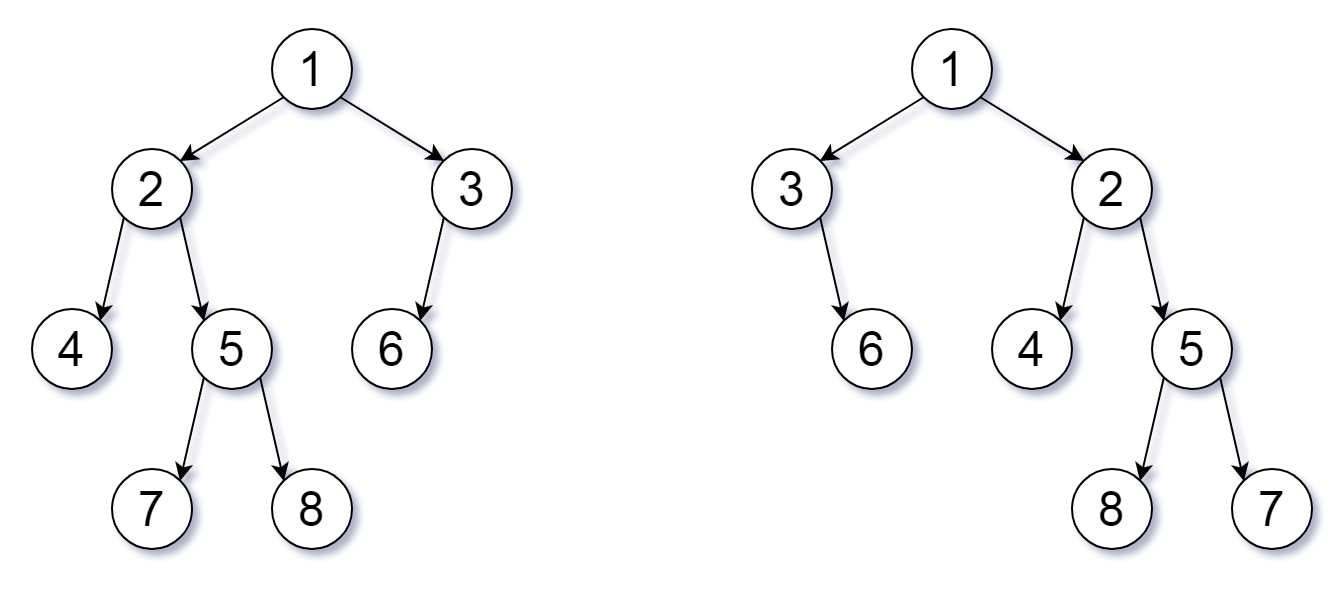951. Flip Equivalent Binary Trees
Problem description:
For a binary tree T, we can define a flip operation as follows: choose any node, and swap the left and right child subtrees.
A binary tree X is flip equivalent to a binary tree Y if and only if we can make X equal to Y after some number of flip operations.
Write a function that determines whether two binary trees are flip equivalent. The trees are given by root nodes root1 and root2.
Example 1:
Input: root1 = [1,2,3,4,5,6,null,null,null,7,8], root2 = [1,3,2,null,6,4,5,null,null,null,null,8,7]
Output: true
Explanation: We flipped at nodes with values 1, 3, and 5.
Flipped Trees Diagram
Note:
Each tree will have at most 100 nodes.
Each value in each tree will be a unique integer in the range [0, 99].
Solution:
1 | /** |
time complexity: $O()$
space complexity: $O()$
reference: